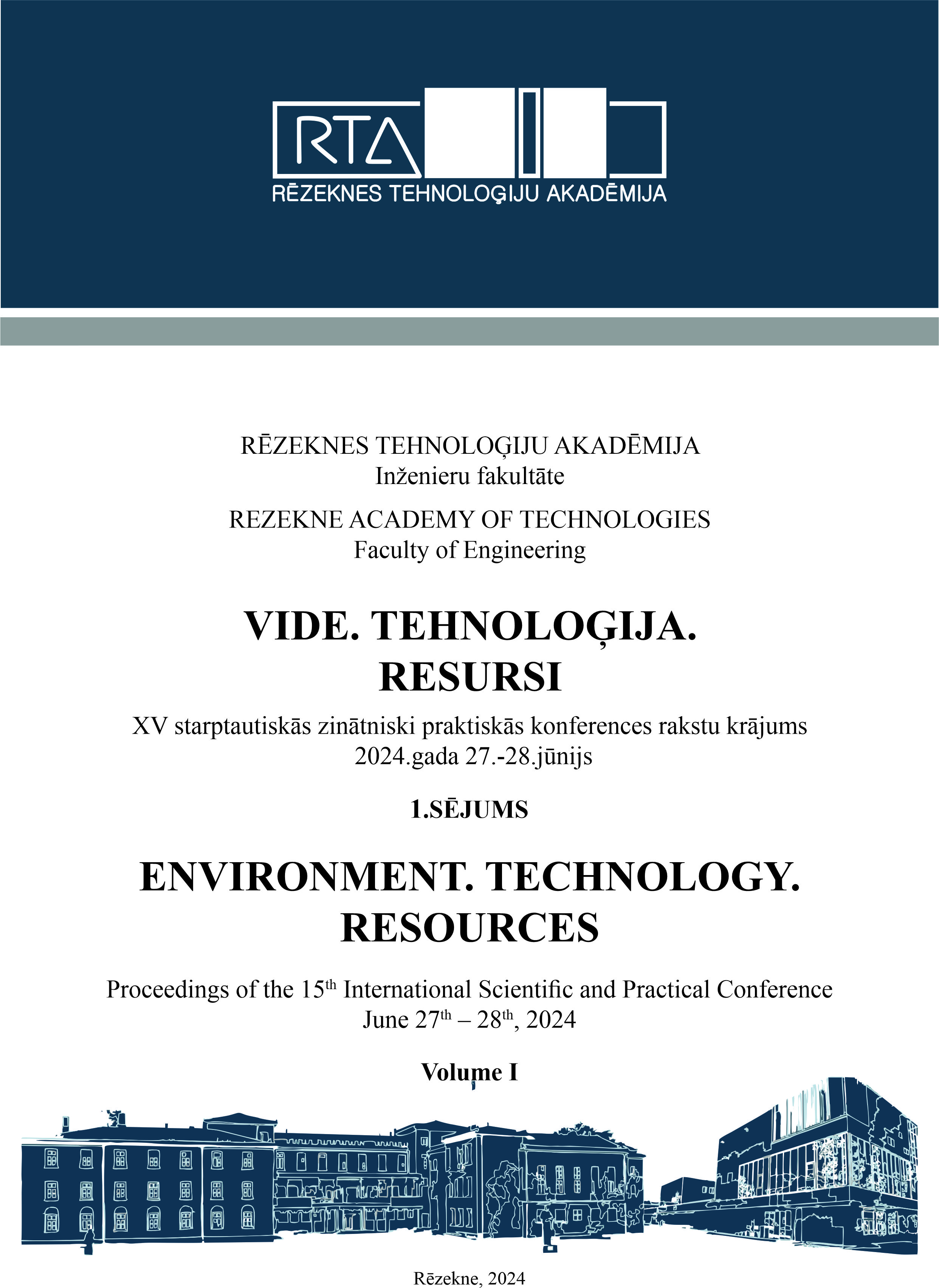ANALYSIS OF CAROTENOIDS IN SWEET POTATOES USING HPLC TO HELP COMBAT VITAMIN A DEFICIENCY
DOI:
https://doi.org/10.17770/etr2024vol1.7994Keywords:
analysis, beta-carotene, carotenoids, pigment, potato, vitamin AAbstract
The fascinating and diverse family of organic compounds called carotenoids is widely found in plants, as well as some bacteria and algae. These natural pigments, with vibrant colours ranging from bright yellow to deep red and flamboyant red, attract attention for their importance in plant biology and their effect on human health. One of the most common vitamin deficiencies in the world is vitamin A deficiency.
The name carotenoids come from the vegetable carrot (carrot in Latin), where there are many well-known beta-carotenoids. These compounds are essential to biological processes beyond contributing to nature's variety of colours.
A deficiency, a persistent public health problem in many parts of the world. The precise quantification of carotenoids, in particular beta-carotene, makes it possible to evaluate the specific contribution of these sweet potatoes to the intake of vitamin A in the diet.
This study offers important data that could guide efforts to promote sweet potato consumption, particularly in regions where vitamin A deficiency is a concern. These tubers can be strategically included in diets to improve the availability of vitamin A, helping to mitigate the risks associated with this nutritional deficiency.
In sum, this HPLC analysis of carotenoids in sweet potatoes provides a solid basis for the promotion of these tubers as a dietary resource rich in provitamin A, thereby contributing to the fight against vitamin A deficiency and the promotion of health. in the communities concerned.
Downloads
References
Vezenkov, L.T., Danalev, D.L., Iwanov, I., ...Vassilev, N., Karadjova, V., Synthesis and biological study of new galanthamine-peptide derivatives designed for prevention and treatment of Alzheimer’s disease, Amino AcidsThis link is disabled., 2022, 54(6), pp. 897–910.
Vitkova, V., Stoyanova-Ivanova, A., Jaber, S., Naydenova, E., Danalev, D., Bending elasticity of phospholipid bilayers containing an amphipathic peptide with low mammalian cytotoxicity, Comptes Rendus de L'Academie Bulgare des SciencesThis link is disabled., 2022, 75(10), pp. 1428–1436.
During, A., Nagao, A., Hoshino, C., & Terao, J.. Assay of beta-carotene 15,15'dioxygenase activity by reverse-phase high-pressure liquid chromatography Analytical Biochemistry, 241(2), 1996, p. 199-205.
Matthew K. Fleshman, β-Carotene Absorption and Metabolism, Dissertation, The Ohio State University Nutrition Graduate Program, 2011.
Boon P. Chew, Role of Carotenolds In the Immune Response, Washington State University Pullman 99164-6320
MSD manuel https://www.msdmanuals.com/fr/accueil/troubles-de-la-nutrition/vitamines/carence-en-vitamine-a [Accessed Jan 12, 2024]
Seheno Harinjato, Creapharma, https://www.creapharma.ch/news-aliments-riches-en-vitamine-a-htm/ [Accessed Nov 15, 2023]
WHO, Global Prevalence of Vitamin A Deficiency, Micronutrient Deficiency Information System World Health Organization, Genève, Suisse, MDIS Working Pape . [Accessed Nov 25, 2023]
Wikipedia, image, https://fr.wikipedia.org/wiki/Carence_en_vitamine_A#/media/Fichier:Vitamin_A_deficiency.PNG. [Accessed Nov 25, 2023]
Britton, G., Liaaen-Jensen, S., & Pfander, H. (1995). Carotenoids. Basel; Boston: Birkhäuser Verlag.
Britton, G., Liaaen-Jensen, S., & Pfander, H.. Carotenoids handbook. Basel; Boston: Birkhäuser Verlag 2004.
Krinsky, N. I.. Carotenoids as antioxidants. Nutrition (Burbank, Los Angeles County, Calif.), 17(10), 2001, 815-817.
Vidal https://www.vidal.fr/parapharmacie/complements-alimentaires/carotenoide.html
Issa T. Somé, Marie-Noël Zagré, Patrick E. Kafando, Mohamed Ag Bendech, Shawn K. Baker, Hélène Deslile, Pierre I. Guissou, Validation d’une méthode de dosage des caroténoïdes par CLHP: application à la détermination de teneur en caroténoïdes dans dix variétés de patates douces (Ipomea batata), 2004
Dolchinkov N., Karaivanova-Dolchinkova, B.E., Impact of Types of Electromagnetic Radiation on Living Nature, 14th International Scienfic and Practical conference Environment. Technology. Resources. Vide. Tehnologija. Resursi, 2023, ISSN 1691-5402, 1, pp. 55–59
Korolev, I., Kravchenko, M., Fedorova, E., Dolchinkov N., Protection of biological objects from electromagnetic radiation, E3S Web of Conferences, 2023, 411, 02003
Dolchinkov N., Optimizing energy efficiency in the conditions of a global energy crisis, Optimizing Energy Efficiency During a Global Energy Crisis, 2023, ISBN13: 9798369304006 EISBN13: 9798369304013, DOI: 10.4018/979-8-3693-0400-6 pp. 1–9
Downloads
Published
Issue
Section
License
Copyright (c) 2024 Trayna Dolchinkova

This work is licensed under a Creative Commons Attribution 4.0 International License.



